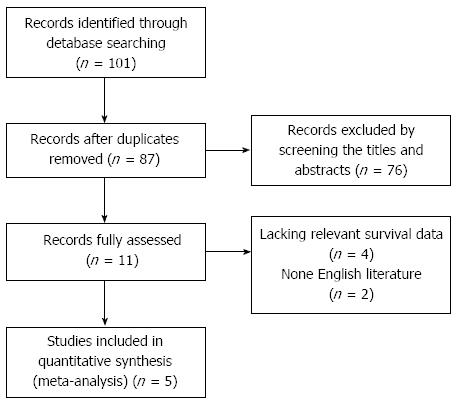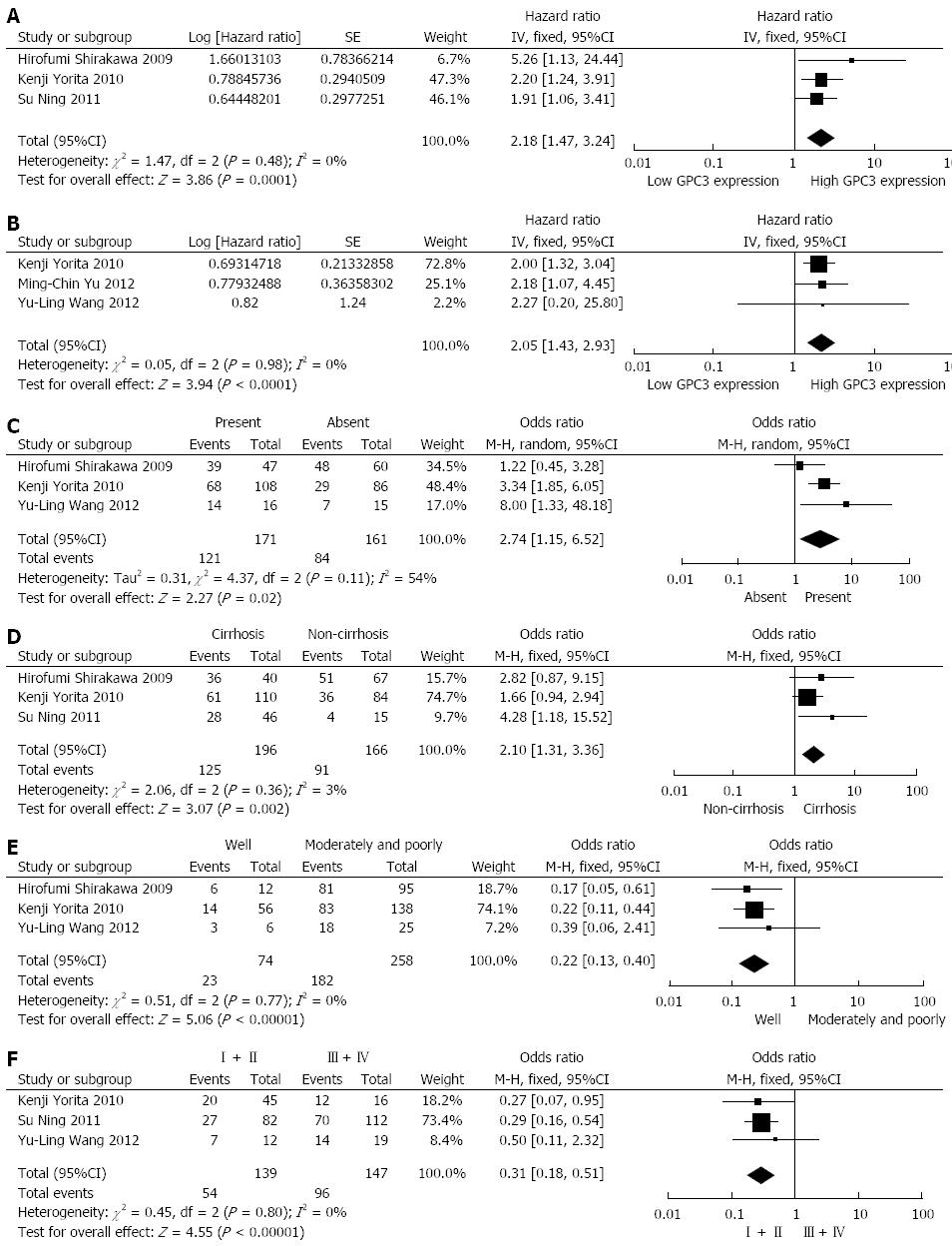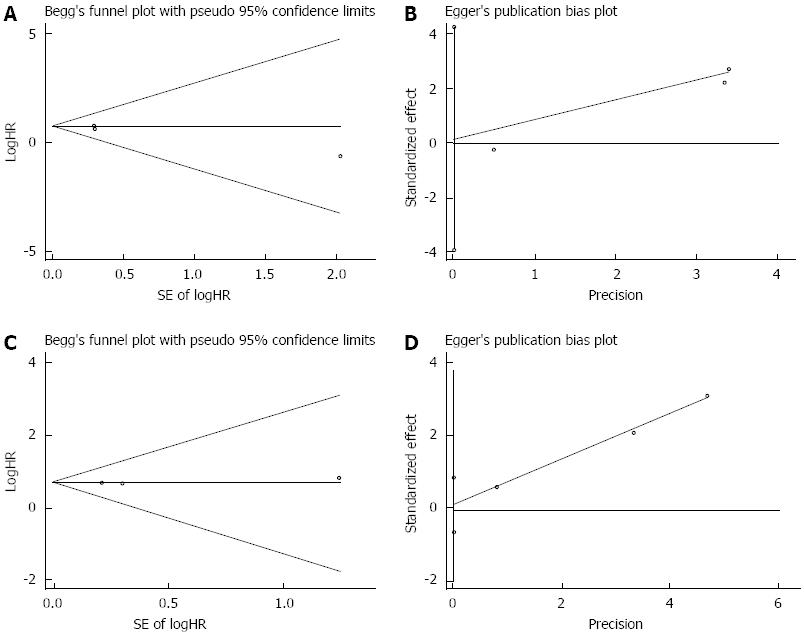Copyright
©2014 Baishideng Publishing Group Inc.
World J Gastroenterol. May 28, 2014; 20(20): 6336-6344
Published online May 28, 2014. doi: 10.3748/wjg.v20.i20.6336
Published online May 28, 2014. doi: 10.3748/wjg.v20.i20.6336
Figure 1 Flow chart of the study selection process.
Figure 2 Meta analysis.
Forest plot of the hazard ratio (HR) for the overall survival (OS) (A) and disease-free survival (DFS) (B) of hepatocellular carcinoma (HCC) patients. The combined HR and 95%CI demonstrated that an increased level of glypican-3 (GPC3) expression was associated with poorer OS and DFS in HCC patients (according to the fixed-effect estimations); ORs and 95%CIs in three studies evaluating the relationship between GPC3 expression and tumor vascular invasion (C) or hepatic cirrhosis (D) in HCC. OR > 1 implied that GPC3 overexpression was associated with tumor vascular invasion and hepatic cirrhosis; ORs and 95%CIs in three studies evaluating the relationship between GPC3 expression and tumor differentiation (E) or tumor TNM stage (F) in HCC; E: OR < 1 indicated that GPC3 overexpression was lower in patients with well-differentiated tumors than in those with moderately or poorly differentiated ones; F: OR < 1 indicated that GPC3 overexpression was lower in patients with stage I/II tumors than in those with stage III/IV tumors.
Figure 3 Begg’s and Egger’s funnel plots used to detect publication bias in overall survival (A and B) and disease-free survival (C and D) studies.
No funnel plot asymmetry was detected in any included studies, which suggests that the meta-analysis lacked publication bias.
- Citation: Li J, Gao JZ, Du JL, Wei LX. Prognostic and clinicopathological significance of glypican-3 overexpression in hepatocellular carcinoma: A meta-analysis. World J Gastroenterol 2014; 20(20): 6336-6344
- URL: https://www.wjgnet.com/1007-9327/full/v20/i20/6336.htm
- DOI: https://dx.doi.org/10.3748/wjg.v20.i20.6336















